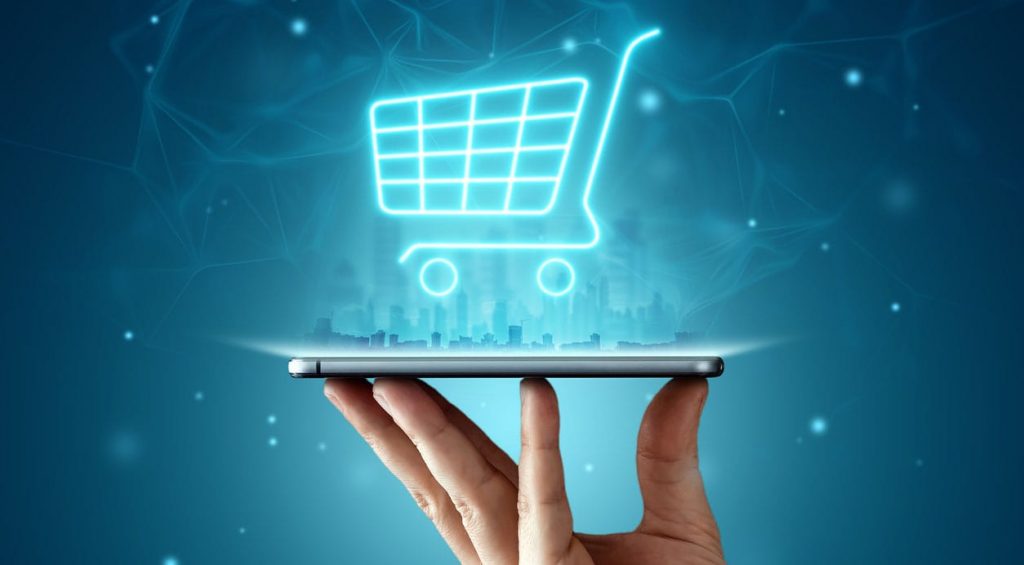A few decades ago, traditional e-commerce platforms transformed the way businesses conducted transactions. Today, headless commerce stands ready to continue this evolution by offering innovative front-end sales methods. But before we delve into its advantages, let’s get acquainted with what exactly headless commerce is.

Here’s What You Will Learn in This Blog
What is Headless Commerce?
In its essence, a headless commerce platform signifies a clear separation between the front end and back end of an e-commerce application. This architectural approach provides businesses with the freedom to craft front-end experiences as they see fit, ultimately enhancing the customer journey. Key to the approach is the utilization of headless commerce APIs, experienced managers, and tools like Heroku and Mulesoft, along with the crucial involvement of IT partners, all contributing to a company’s innovation strategy.
Traditional Commerce vs Headless Commerce
When e-commerce first emerged, companies sought all-in-one platforms that could handle the entire online sales process, from start to finish. This encompassed digitizing back-end processes such as customer login, product and order management, payment processing, and shipping. Front-end tasks, including pre-built website plugins and chat integrations, were also part of the package.
However, as e-commerce evolved, developers encountered limitations in pre-packaged front-end options. These limitations stemmed from the interconnectedness of front-end and back-end processes, making it challenging to introduce unique, fully customizable methods to attract and retain customers. Developers began requesting a way to decouple the front end from the back end of e-commerce platforms, giving rise to what we now call headless commerce.
Headless commerce entails businesses taking charge of building their own front-end processes, often referred to as “the head,” while leveraging pre-packaged back-end tasks to complete the end-to-end e-commerce process through APIs integrated into a headless commerce platform.
Now, let’s explore the top 10 benefits of headless commerce solution accompanied by headless commerce examplesin various industries.
1. Time Savings Across IT
In a headless commerce setup, changes to the front end can be made swiftly and without disrupting the entire system. Developers can save valuable time when implementing user interface changes. Additionally, with headless templates and partner solutions, developers only need a few clicks or some light coding to jumpstart commerce apps that increase conversion.
This flexibility in front-end development is especially vital in the fast-paced world of fashion retail, where timely updates to the user interface are crucial. For instance, here is an example of headless commerce case study, fashion retailers must swiftly implement changes to their online presence to remain stylish and up-to-date. With headless commerce, these retailers can seamlessly adapt to ever-evolving trends and customer preferences, all while saving valuable time in the process.
2. Time to Market
In the fiercely competitive food delivery industry, the ability to respond swiftly to ever-shifting market trends is absolutely crucial. With headless commerce at their disposal, food delivery platforms gain a powerful advantage. This approach empowers them to introduce fresh and enticing front-end experiences with remarkable speed and efficiency. Imagine a restaurant updating its menu or décor to reflect the latest culinary trends – headless commerce makes it just as seamless in the digital realm. What’s even more remarkable is that when a new trend emerges, these platforms can adapt almost instantly, all while minimizing the need for costly and complex back-end development. This means they can not only keep up with evolving customer preferences but also surge ahead of their competitors, maintaining their position as the go-to choice for customers seeking quick and convenient dining experiences.
3. True Omnichannel Experience
Achieving a genuine omnichannel sales experience is essential in today’s digital landscape. It means customers can seamlessly shop through various digital avenues, whether it’s on a PC, a mobile device, a chatbot, or any other digital platform. While many traditional e-commerce platforms claim to offer an omnichannel experience, that’s not always the case. Often, businesses find themselves limited by the capabilities of their legacy e-commerce systems. If they want to add a new digital sales channel, and their existing platform doesn’t support it, they’re stuck. This is where headless commerce steps in, granting businesses the freedom to empower their own developers to create a front end for a new digital sales channel whenever they choose, without delays. As we witness the evolution of smart kiosks, interactive digital signage, and other forms of commerce-centric Internet of Things (IoT) technology, the ability to effortlessly integrate new digital channels into the broader e-commerce ecosystem becomes incredibly powerful.
Take, for instance, an electronics manufacturer. In their industry, providing a true omnichannel experience is not just a competitive advantage; it’s vital. With headless commerce, they gain the capability to seamlessly sell their products across a spectrum of digital channels. Customers can make purchases through desktop computers, mobile devices, chatbots, and more, ensuring a convenient and consistent shopping experience, regardless of how they choose to interact with the brand. This adaptability and flexibility among headless commerce advantagesare indispensable for businesses seeking to thrive in today’s ever-evolving digital marketplace.

4. Complete Front-End Customization
Traditional e-commerce platforms offer businesses a degree of customization within the constraints of pre-built front-end tools. However, headless commerce products open the door to a realm of limitless potential when it comes to front-end customization. This includes the seamless integration of Internet of Things (IoT)-enabled tools directly into the headless customer experience platform. Some illustrative examples of these capabilities encompass proximity marketing, intelligent cross-selling, and IoT-based loyalty programs.
For instance, let’s consider the case of a home decor retailer. Such a retailer can derive immense benefits from the vast front-end customization options offered by headless commerce. They can go beyond conventional customization and introduce cutting-edge IoT-enabled tools, such as augmented reality (AR) applications, into their headless commerce platform. This innovation allows customers to visualize how different furniture and decor items will appear in their own homes, thus significantly enhancing the overall shopping experience. Customers can virtually place items in their living spaces, providing a level of interactivity and personalization that goes far beyond what traditional e-commerce platforms can offer. This level of customization not only engages customers on a deeper level but also fosters greater confidence in their purchase decisions, ultimately leading to increased sales and customer satisfaction.
5. Personalized Customer Experience
In today’s competitive market, customers seek personalized experiences that align with their unique needs and buying preferences. With the adoption of a headless commerce platform, organizations gain the ability to finely tune their front-end sales strategies to cater to individual customer tastes and preferences. For businesses aiming to stand out in a crowded marketplace, personalizing the initial online sales presentation becomes paramount. This entails incorporating features like tailored shopping preferences, personalized product recommendations, and promotions specifically targeted based on a customer’s past purchase history. The magic of personalization lies in its ability to forge a stronger emotional connection between customers and the companies selling products or services. Moreover, it is a well-documented strategy for fostering long-term customer loyalty and retention.
Consider the case of a subscription box service, for instance. Such a business can flourish by offering a deeply personalized customer experience. Through a headless commerce platform, they can meticulously customize front-end sales approaches to align with the individual preferences of their subscribers. This can encompass personalized product recommendations, bespoke subscription plans, and exclusive promotions tailored to each subscriber’s unique tastes. The result? Increased customer retention and a dedicated customer base that’s more likely to stay committed to the service over the long haul.
6. Flexibility
Customer buying habits and behaviors can evolve rapidly, often in response to unexpected events such as the Covid-19 pandemic. In such situations, the adaptability of front-end sales tools becomes paramount. This adaptability encompasses the capability to swiftly adjust advertising strategies to align with shifting shopper interests, providing flexible delivery and pickup options, and seamlessly integrating the digital channels most preferred by customers for purchasing products or services. When a company’s customer base preferences shift overnight, only a headless commerce platform possesses the agility required to keep pace with these changes. Especially during special events or seasonal promotions, the ability to pivot and modify advertisements, delivery options, and digital channels on the fly becomes a crucial competitive advantage. A retailer, for example, can quickly tailor their sales approach to suit the specific and ever-evolving needs and preferences of their customer base.
7. Increased Conversion Rates
In the world of e-commerce, the key to success lies in reducing website bounces and shopping cart abandonment rates by infusing a sense of excitement into the products or services on offer. Headless commerce represents a shift towards enabling in-house developers with the tools of personalization, flexibility, and creativity, allowing them to craft unique and engaging experiences for customers. These experiences can take the form of personalized promotions, interactive activities like quizzes or games that lead to discounts, and innovative product recommendations that go beyond the conventional. This infusion of excitement often results in a tangible uptick in conversion rates across all sales channels.
Consider the scenario of an online gaming platform, for instance. By harnessing the capabilities of headless commerce, they can supercharge their conversion rates. Through the provision of personalized promotions, engaging in-game experiences, and meticulously tailored recommendations, they can create an atmosphere of excitement that reverberates across all gaming channels. This heightened excitement not only enhances the user experience but also translates into a substantial increase in conversion rates, making it a winning strategy for online gaming platforms looking to drive growth.

8. Long-Term Cost Savings
Although running a headless commerce platform may initially appear more costly when compared to traditional e-commerce, businesses should take a longer-term perspective into account. While it’s true that front-end development costs may rise as companies create innovative digital sales channels, the true value lies in the potential for customer acquisition and retention that these unique tools offer. When developers invest in enhancing the front end of e-commerce platforms with more opportunities and customization, they can ultimately reduce expenditures on sales and marketing campaigns. Consider the case of a health and wellness e-commerce platform. By prioritizing investments in front-end development, they can create a highly personalized and adaptable shopping experience for their customers. This enhanced customer experience not only fosters loyalty but also reduces the necessity for extensive and expensive sales and marketing efforts. In the long run, the platform reaps the rewards of lower customer acquisition costs and improved customer retention rates, making the initial investment in front-end development a strategic move for sustainable cost savings.
9. Scalability
Headless commerce offers unparalleled scalability for businesses seeking to expand their digital presence and cater to evolving customer demands. One of its standout features is the ability to make changes to the front-end without affecting the back-end commerce functionality. This inherent separation means that businesses can seamlessly scale their e-commerce operations as needed, all while avoiding the risk of disrupting their core commerce processes.
For instance, consider a global electronics retailer with a vast and ever-growing customer base. Such a retailer requires a highly scalable solution to meet the demands of a worldwide audience. Headless commerce platforms perfectly fit the bill by providing the scalability needed to ensure a consistently smooth and responsive shopping experience for customers across the globe. This means that as the retailer expands its product offerings, adds new features, or enters new markets, the headless commerce architecture can effortlessly accommodate these changes without compromising performance or functionality. In essence, headless commerce offers the scalability that modern businesses need to thrive in an increasingly digital and globalized marketplace.
10. Offers Best-of-Breed Integrations
Enterprise retailers often find themselves managing multiple diverse delivery requirements, necessitating a flexible and extensible data model that spans various channels. Headless commerce offers a solution by providing a robust API that empowers businesses to retrieve and manipulate data effortlessly. Moreover, it fosters a coherent ecosystem of apps and integrations, enabling enterprises to operate with agility and adaptability.
For instance, imagine a retail giant with a presence across various online and offline channels. They wish to create a seamless and personalized customer experience by integrating emerging technologies such as chatbots, voice assistants, and artificial intelligence into their sales strategy. Headless commerce empowers them to do just that. By easily integrating these best-of-breed technologies, the retailer enhances its ability to connect with customers, provides a more personalized shopping experience, and reinforces alignment with its brand identity.
Frequently Asked Questions (FAQs)
Headless commerce is suitable for businesses looking to create a unique, personalized shopping experience across digital channels, make quick changes to their shopping experience, and experiment with new technologies.
Headless commerce separates the front-end and back-end commerce functionalities, offering flexibility in presentation and delivery. Composable commerce takes it a step further by allowing businesses to mix and match modular components, services, and applications to create a highly customizable and scalable commerce architecture.
To start with headless commerce, assess your business goals, choose a suitable headless commerce platform, implement it (consider working with experienced partners), and then launch your solution to create a personalized shopping experience.
When choosing a headless commerce solution, consider factors such as scalability, integration capabilities, total cost of ownership, and support for your desired touchpoints and channels. Evaluate vendor reputation and community support as well.
Security remains a top priority in headless commerce. Ensure that your chosen platform has robust security features, including encryption, authentication, and protection against data breaches. Regular security audits and updates are essential.
Headless commerce empowers businesses to execute omnichannel strategies effectively by providing the flexibility to create and deliver consistent shopping experiences across various channels, including web, mobile, IoT, and voice.
Headless commerce solutions are highly scalable. To ensure they can handle growth, select a platform with scalability features, monitor performance regularly, and plan for infrastructure upgrades or cloud-based solutions as needed to accommodate increased demand.
Yes, headless commerce solutions are highly customizable. You can tailor the front-end design, user experience, and functionality to match your business’s unique needs, branding, and customer preferences.
In conclusion, headless commerce represents a significant evolution in e-commerce, empowering businesses with unprecedented flexibility, customization, and agility. Whether you’re in fashion retail, food delivery, electronics, or any other sector, adopting a headless commerce approach can revolutionize your online presence and elevate the customer experience to new heights.
As a strategic partner of industry leaders like Salesforce, SAP, and Oracle, Nsight has consistently demonstrated the expertise and capabilities required to successfully implement strategies that harness the power of headless architecture. We’ve enabled numerous companies to unlock new realms of possibilities in the world of commerce.
Now, you can connect with us to explore how we can collaborate and implement the latest advancements in headless commerce, enabling your business to stay at the forefront of innovation, enhance customer experiences, and achieve new heights of success. Together, we can shape the future of commerce and drive your business forward.
Elevate your Customer Experience with the Power of
Headless Commerce
About the Author

Rashmi Shrivastava is a data-driven, results-oriented, and tech-savvy B2B Marketing & Business Strategy Leader with a proven track record of over a decade of building brands, accelerating growth, and leading digital transformation. Inherently passionate about crafting, executing, and managing overall growth strategies, she successfully leads cross-functional Marketing and Demand Generation teams.
Rashmi has managed digital transformation projects across domains with a constant focus on building a transformational CX strategy. She has supported brands to adopt a value-driven and customer-centric culture.





